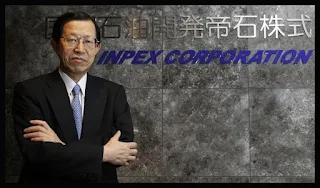Investor Daily, Page-9, Friday, Dec 2, 2016
Friday, December 2, 2016
Indonesia Temporarily Freezes OPEC Membership
Investor Daily, Page-9, Friday, Dec 2, 2016
Friday, November 18, 2016
Lower Gas Prices Boost Petrochemical Growth
Wednesday, November 2, 2016
Revision of Oil and Gas Law Requested to be Accelerated
Industrialists await the birth of a revision of Law No. 22 of 2009 concerning Oil and Gas (UU Migas). The slow completion of the revised regulation is considered to have worsened the oil and gas investment climate, which is currently in crisis.
He admitted that the oil price which had reached below US$ 30 per barrel was a major blow to the upstream oil and gas industry, as well as the supporting industries. His party hopes that the House of Representatives (DPR) as the initiator and the government take quick steps in completing the revision of the Oil and Gas Law which is included in the National Legislation Program. The Indonesian Chamber of Commerce (Kadin) also hopes that the role of the private sector will be strengthened as a strategic partner of the government.
Regarding the aspect of oil and gas governance, Kadin requested that there be special rules that ensure the availability and development of infrastructure so that the distribution is evenly distributed. Moreover, in 2030, gas is predicted to make a major contribution to industrial development. The high price of gas makes production costs higher so that it suppresses competitiveness.
Deputy Minister of Energy and Mineral Resources (ESDM) Arcandra Tahar did not deny that upstream oil and gas activities in recent years were at their lowest point, Indonesia was in the bottom 15 of the 120 countries where oil and gas investment is located, which means that the domestic investment climate is not conducive. Member of the Indonesian House of Representatives Commission VII Satya Widya Yudha said the discussion on the revision of the Oil and Gas Law was expected to be completed in early 2017.
Media Indonesia, Page-17, Wednesday, Nov 2, 2016
Tuesday, October 25, 2016
Upstream Gas Price Can Be US$ 3.82 Per MMBTU
The Ministry of Energy and Mineral Resources (ESDM) stated that gas prices could drop to US$ 3.82 per MMBtu if the state did not take non-tax state revenues (PNBP) and income taxes (PPh) from gas trading. Malaysia has done this so that gas prices can come down to the consumer level.
The Directorate-General for Oil and Gas at the Ministry of Energy and Mineral Resources, I Gusti Nyoman Wiratmaja Puja, explained that there are two types of gas prices, namely the share of the revenue for the Cooperation Contract Contractors (KKKS) and the share for the state.
For the KKKS part, we must respect the applicable contract. According to him, the most flexible to be reduced is the share for the state. Namely, from PPh and PNBP, they only ask for approval from the Coordinating Ministry for the Economy.
This method can reduce the gas price which is currently US$ 10 per MMBTU for end users. However, state revenues can also drop drastically. Malaysia has used that method, not taking part of the state. If the government does not take PNBP, the price of piped gas upstream could be US$ 5.01 per MMBtu.
But the state lost revenues of up to US$ 544 million or Rp. 7 per year (exchange rate of Rp. 13,000 per US dollar). If the state does not take all of the state's share including PPh, the gas price upstream will be US$ 3.82 per MMBtu. However, the government must lose US$ 1.26 billion or around Rp. 16.4 trillion per year. But there is another way, namely to reduce transmission and distribution costs by US$ 2.4 per MMBtu.
Kontan, Page-14, Tuesday, Oct 25, 2016
Monday, October 24, 2016
The Downstream Oil and Gas Sector is Arranged, the Upstream Sector is Still Constrained
The development of the Masela Block is limited to correspondence
Saturday, October 22, 2016
2017-2018, Indonesia LNG Excess Supply
Investor Daily, Page-9, Saturday, Oct 22, 2016


















